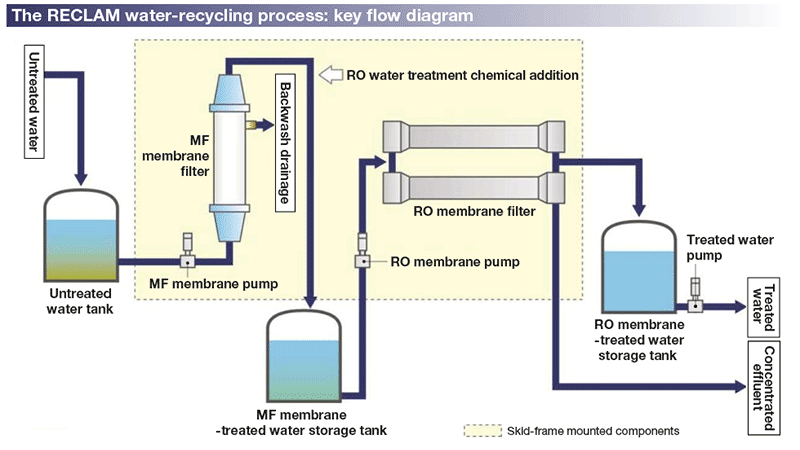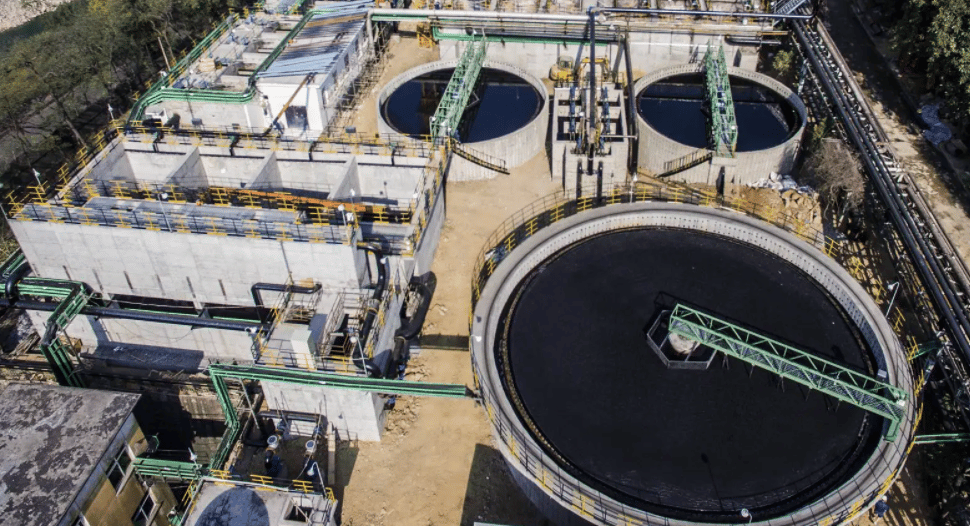Industrial Waste Water Treatment-- Safeguard the Atmosphere with Professional Water Treatment Solutions
Wiki Article
Challenges and Solutions in Hazardous Waste Water Therapy
The therapy of commercial wastewater offers a diverse selection of obstacles, varying from stringent regulative conformity to the details of price management and technological constraints. The irregularity in waste composition additionally makes complex the performance of traditional treatment approaches, commonly resulting in risen operational expenses. Nevertheless, arising services such as sophisticated oxidation procedures and ingenious financing models reveal guarantee in attending to these concerns. As sectors come to grips with the demand for sustainable practices, the concern continues to be: what strategies will ultimately lead to a balance between compliance, cost-efficiency, and ecological responsibility?Regulatory Conformity Obstacles
How can industrial centers browse the complicated landscape of regulative compliance in wastewater therapy? The governing structure controling wastewater monitoring is diverse, usually varying by jurisdiction and type of sector.To effectively handle these conformity challenges, centers need to execute robust surveillance and reporting systems that make certain real-time data collection and analysis. Routine audits and threat evaluations can determine possible compliance voids, permitting proactive changes in treatment processes. Staff member training programs concentrating on regulatory expertise and ideal methods are necessary to foster a culture of compliance within the organization.
In addition, engaging with regulative agencies can offer useful understandings and make clear ambiguous policies. Facilities might additionally profit from seeking advice from ecological experts that focus on wastewater therapy compliance, making certain that they stay abreast of evolving laws. By embracing these methods, commercial facilities can not just satisfy compliance requirements yet also enhance their functional effectiveness and ecological stewardship.
Price and Economic Barriers
Browsing governing conformity in wastewater treatment frequently presents substantial economic challenges for industrial facilities. The prices connected with implementing required treatment innovations, keeping compliance with rigid policies, and handling operational expenditures can be daunting. Many organizations deal with high initial funding expenses for the construction or upgrading of wastewater treatment plants, which may stress spending plans, particularly for medium-sized and little business.Moreover, recurring operational prices, including chemical, upkeep, and labor inputs, contribute to the monetary worry. The unpredictability of varying power prices and the prospective need for extra financial investments to satisfy evolving guidelines exacerbate these financial stress. In lots of situations, the absence of economic rewards or assistance from federal government bodies makes it much more difficult for companies to justify investments in sophisticated treatment systems.
Furthermore, the economic practicality of wastewater treatment services is typically examined, particularly for industries with limited earnings margins. It is critical for commercial centers to discover affordable strategies, such as embracing cutting-edge funding alternatives, engaging in partnerships, and leveraging emerging modern technologies that can help reduce these financial obstacles while ensuring conformity with ecological criteria.

Technological Limitations
Countless technological limitations hinder the performance of commercial wastewater treatment processes. One significant difficulty is the insufficiency of existing therapy innovations to deal with intricate impurities.Additionally, the scalability of treatment modern technologies presents a address difficulty. While some innovative methods, like membrane layer purification or sophisticated oxidation, show assurance in regulated settings, their useful source execution on a larger range can be practically difficult and excessively pricey. Upkeep and operational complexities even more complicate the fostering of these systems, particularly for smaller sized industries with limited technological competence.
The combination of real-time monitoring technologies likewise continues to be inadequate in numerous therapy centers. Without reliable surveillance systems, drivers can not sufficiently assess therapy efficiency or detect potential failings, leading to inconsistent effluent high quality. Subsequently, attending to these technical limitations via r & d, alongside financial investment in cutting-edge remedies, is important for boosting the efficacy of industrial wastewater treatment and ensuring governing compliance. Industrial Waste Water Treatment.
Irregularity in Waste Composition
In the realm of industrial wastewater treatment, the variability in waste structure presents a formidable obstacle. Industries generate wastewater with varied attributes, affected by elements such as production procedures, resources, and operational methods. This heterogeneity complicates the therapy process, as traditional systems often battle to effectively attend to the large range of contaminants existing.As an example, wastewater from food handling may contain high levels of raw material, while effluents from chemical production might include hazardous substances and heavy metals. This variance demands adaptable treatment techniques to make certain conformity with ecological laws and shield public health and wellness. Additionally, changes in waste composition can happen over time, affected by changes in production timetables, maintenance tasks, or the intro of new items.

Cutting-edge Therapy Solutions
Innovative treatment solutions are crucial for resolving the complexities of commercial wastewater management. Standard methods often fall brief in efficiently removing a wide variety of pollutants, specifically in facilities with diverse effluent streams. Current innovations focus on integrating sophisticated technologies to improve therapy efficiency and sustainability.One appealing technique is the use of advanced oxidation processes (AOPs), which leverage effective oxidants to weaken organic pollutants. AOPs, including photocatalysis and ozonation, can substantially lower toxic compounds and enhance effluent high quality. In addition, membrane layer bioreactor (MBR) modern technology has acquired traction, integrating biological therapy with membrane layer filtration, resulting in premium effluent and minimized impact.
An additional cutting-edge remedy is the execution of source recuperation systems. Techniques like anaerobic digestion not only treat wastewater but also produce biogas, which can be harnessed as a renewable energy source. In addition, the adoption of fabricated knowledge and equipment understanding models can enhance treatment processes click over here by anticipating variations in wastewater composition, thus improving operational performance.
These cutting-edge options not only address governing conformity however also advertise environmental sustainability, paving the method for a more resistant and effective industrial ecosystem.
Verdict
In conclusion, dealing with the difficulties of commercial wastewater treatment requires a diverse technique that incorporates governing conformity, cost management, and technological improvements. A dedication to continual improvement in treatment approaches will eventually contribute to the efficient administration of industrial wastewater and environmental protection.The therapy of commercial wastewater provides a diverse variety of obstacles, varying from rigorous governing conformity to the details of price management and technical constraints. Industrial Waste Water Treatment.Browsing governing conformity in wastewater therapy commonly provides considerable financial difficulties for industrial facilities. Addressing these technical constraints with research study and development, alongside financial investment in cutting-edge services, is essential for boosting the efficacy of industrial wastewater therapy and making sure regulative compliance
Wastewater therapy facilities need to spend in durable surveillance systems and adaptable treatment technologies capable of suiting differing influent qualities.In conclusion, resolving the difficulties of industrial wastewater therapy requires a multifaceted approach that incorporates regulative compliance, price administration, and technical improvements.
Report this wiki page